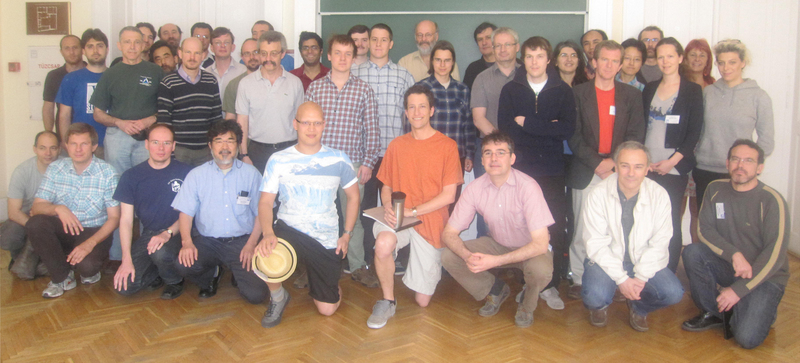
at the
American Institute of Mathematics, San Jose, California
organized by
Jim Bryan, Andras Nemethi, Davesh Maulik, Joerg Schuermann, Balazs Szendroi, and Agnes Szilard
Donaldson-Thomas theory has blossomed in recent years as an algebro-geometric enumerative theory on Calabi-Yau and other threefolds, with connections to topological string theory, Gromov-Witten theory, combinatorics, representation theory, symmetric functions and integrable systems. While these invariants are defined in great generality and are expected to have a nice conjectural structure, their computation has posed a major challenge in all but the simplest cases.
A major advance was the work of Behrend, who observed that, in the Calabi-Yau case, DT invariants arise from a symmetric obstruction theory, whose obstruction cone is a Lagrangian subcone of a cotangent bundle. This fits nicely with the microlocal geometry of characteristic cycles due to Kashiwara et al. and the theory of MacPherson-Chern classes for constructible functions, so that the corresponding DT invariant is given by the Euler characteristic of an intrinsic constructible function attached to the moduli space. If the DT-type moduli space arises locally as the critical locus of a holomorphic function on a complex manifold, then the value of Behrend's distinguished constructible function at a point is the reduced Euler characteristic of the Milnor fibre of the function at the point. This observation brings the methods of singularity theory to bear on the problem, since the Milnor fibre is one of the basic invariants of a singularity. Its (reduced) Euler characteristic or cohomology can be codified by the powerful language of nearby/vanishing cycles of constructible functions or sheaves.
This point of view also allows for local "motifications" and "categorifications", respectively, where one replaces a numerical invariant (an Euler characteristic) by a motivic class or a Hodge theoretical cohomology group coming from the motivic class or mixed Hodge module of vanishing cycles. This point of view has inspired a great deal of recent activity in the field. A key technical result is a corresponding Thom-Sebastiani theorem for vanishing cycles.
In a parallel development, the singularity theory community has been tackling closely related problems about characteristic Chern- resp. Hirzebruch classes of singular complex hypersurfaces in terms of nearby/vanishing cycles of constructible functions resp. motivic Grothendieck groups or mixed Hodge modules.
The aim of the workshop is to bring all these developments together in a creative way. We aim to discuss the following topics during the workshop.
The workshop schedule.
A report on the workshop activities.
Papers arising from the workshop: